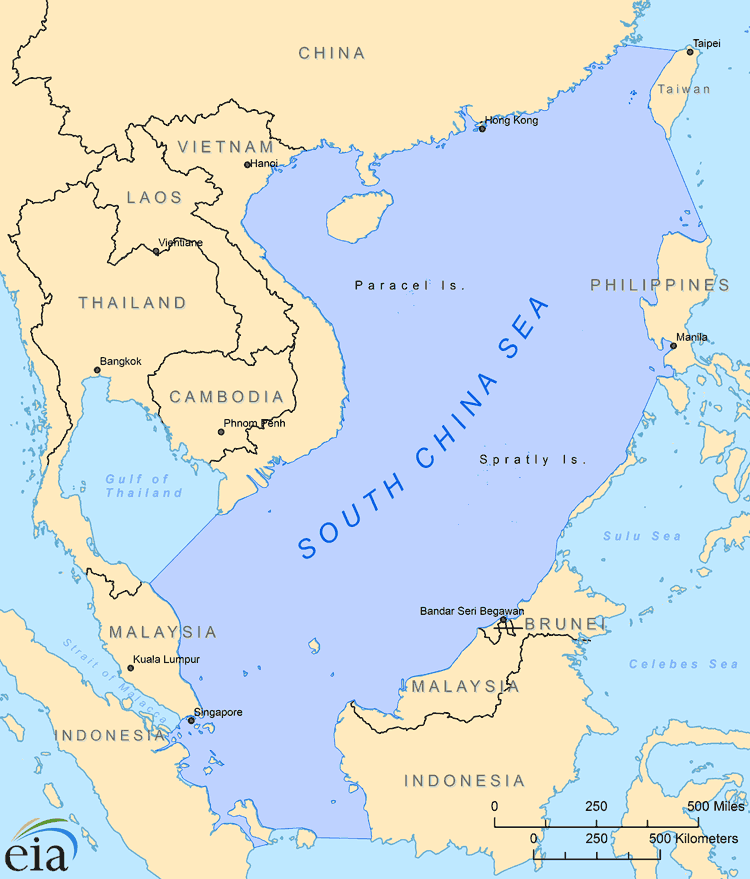
NUSA DUA, Bali – The 20th ASEAN Chief Defence Force Meeting (ACDFM) was successfully run in Bali on 5-9 June 2023. All military chiefs of the bloc were in attendance except for Myanmar, instead represented by Brigadier General Phyo Zaw Soe DA, Defence Attache to the member state.
Chaired by Indonesia, this year’s annual meeting saw an unexpected statement from Indonesian Military Commander Admiral Yudo Margono, who confirmed that the bloc had plans to conduct a joint military exercise in the South China Sea in September. Accordingly, the exercise will be hosted in the North Natuna Sea, historically deemed an area of contention between Chinese vessels and Indonesian maritime security due to illegal fishing and other patrol activities.
The proposed joint exercise is not entirely new, as numerous multinational military exercises have occurred in recent years between bloc members and other countries. For example, the Philippines and the United States announced their largest combat exercise in South China Sea waters this year. However, the proposition is the first to involve all 10 bloc members, including observer member Timor-Leste.
In recent years, ASEAN member states have expressed their concerns over China’s increasingly aggressive behaviour in the region, citing the harassment of Vietnamese oil and gas operations in the waters, trespassing in Vietnam’s exclusive economic zone, and the targeting of a Philippine Coast Guard ship with a military-grade laser just this year. As China’s exhaustive claims of sovereignty over the approximately 11 billion barrels of natural resources (including oil and gas) intensifies, members of the bloc have become increasingly concerned for the regional peace and security of the area.
In 2002, following years of unproductive negotiations, China and ASEAN signed a Declaration on the Conduct of Parties in the South China Sea, promising to work towards a code of conduct. Only 21 years later, progress has been slim, if at all, any. If anything, China has continued to implement a hard approach, through the creation of industrial and military outposts on the artificial islands built in the disputed waters.

The South China Sea is of strategic importance to countries in the region, making it no surprise to see the great lengths countries would go to to defend their claims. One of the biggest geographical considerations is its role as a focal point for travel, with more than half of the world’s supertanker traffic and merchant fleets sailing through the waters. In terms of geopolitics, the waters are also of great significance, as the body of water was used by the United States during the Vietnam War as well as Japan during the Japanese invasion of Malaysia, the Philippines, and Indonesia. However, one of its more significant elements is the abundance of natural resources. Especially for Southeast Asian countries considered among the world’s most resource-poor continents, seeking and securing the availability of resources to maintain and develop their economies is of the essence.
Although countries in the bloc have previously tread lightly on the topic, the increasing concern for the peace and security of the waters has triggered recent moves, especially with Indonesia’s role as ASEAN Chair for the year. Given the context, the hopes of crafting a diplomatic answer to maintain strategic (primarily economic) ties with China are becoming increasingly complicated.
It appears that the newly announced joint military exercises is a chance for ASEAN member states to prove themselves more than just “toothless tigers” but rather, a force to be reckoned with. The announcement of the proposed joint exercise appears to be a changing tide for the bloc, which has been previously criticized for its inflexible approach and its principle of non-interference (a key tenet for the bloc). Many have expressed their disappointment at ASEAN’s inability to properly address crucial issues within the bloc, regarding not only the South China Sea but also the junta-led Myanmar and other human rights abuses.

According to the statement by Margono, a unanimous agreement has been met by the 11 military chiefs (including Timor Leste) for the September schedule, in hopes to create a stronger, stable, and centralized ASEAN. The military exercises will not be of combat operations kind, according to Indonesia, but instead focused on non-traditional security, humanitarian, and disaster relief efforts.
However, a statement was released days following the announcement with General Vong Pisen, Commander-in-Chief of the Royal Cambodian Armed Forces, denying the decision. According to Pisen, the idea was raised during the meeting — to which Cambodia and several other countries have not responded. He added that the joint statement from the meeting “did not mention ASEAN joint military exercises in the South China Sea.”
Cambodian officials were quick to distance themselves from the idea, in fears of potentially riling up sides. The Cambodian economy not only fundamentally relies on the support of Chinese investors but also shares strong political and military relations. Still, the Indonesian military confirmed the joint exercises to be held on 18-25 September 2023 despite the hesitancy from Cambodia, sparking more concerns over the proposal.
In response, Chinese embassy Spokesperson Liu Pengyu reiterated the way defense and security cooperations between countries must be conducive to regional peace and stability and shouldn’t escalate tensions nor undermine the trust between nations.
For now, a wave of uncertainty lingers upon the proposition, as the Cambodian military has since formed a working group to analyze and study the proposal in depth. But amidst all the skepticism, one thing is clear: ASEAN currently finds itself in a difficult position with a hard decision to make — one that could either bring greater unity within a divided bloc or potentially trigger a greater brawl in the South China Sea.